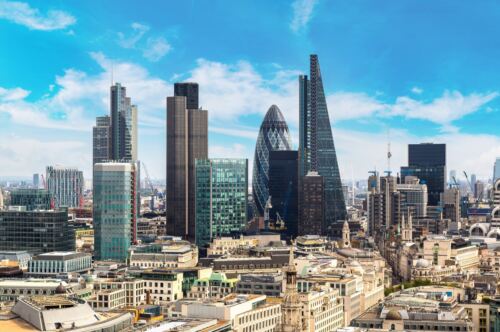Top five energy saving initiatives
Research shows that buildings in the EU account for around 40 percent of total energy use and are responsible for some 36 percent of greenhouse gas emissions. A typical HVAC system uses around 39 percent of a building’s total energy consumption, and it is estimated that around 75 percent of buildings in the EU are energy inefficient, meaning a large part of the energy used goes to waste, creating unnecessary greenhouse gas emissions.
Today, pressure is on building owners and managers to reduce energy consumption and carbon emissions, in a bid to reach net zero by 2050. Minimum Energy Efficiency Standards legislate that all commercial properties being let from 1 April 2023 should have a minimum EPC rating of an E, even where there has been no change in tenancy. With an incremental increase to EPC rating C or higher expected by 1 April 2027, rising to a B or higher by 2030, many building owners and managers have already, or are starting to, future proof commercial buildings.
There are many ways a business can save energy and cut running costs – here, Evotech’s Senior Consulting Engineer, Richard Watts provides his top five energy saving initiatives:

 Switch to energy saving LED lighting
Switch to energy saving LED lighting
In commercial buildings, lighting accounts for around 30% of total energy usage. Savings of up to 80% can be made by deploying efficient LED lamp technologies.
Maintenance costs are also reduced as the products are usually guaranteed maintenance free for up to 10 years by some manufacturers.

 HVAC optimisation
HVAC optimisation
The three basic functions of a Building Energy Management System (BEMS) are improving plant control, monitoring energy usage and optimising plant operating times.
Traditional BEMS, however, are commonly poorly configured, use data from aging uncalibrated sensors, and don’t take advantage of real-time or forecast weather data. Significant savings can be made by installing an effective HVAC optimisation system.
An AI-based solution, like Evotech’s myBEMS, uses non-linear control techniques instead of a rule-based approach, processing real-time data from sensors and adjusting the system automatically. Overall, typical annual energy savings of 20 – 40 percent can be achieved with a ROI in less than 12 months.

 Supply voltage optimisation
Supply voltage optimisation
Most modern equipment is designed to operate at a voltage of 400/230V, however, the UK electricity supply averages over 420/240V, or higher. Optimising supply voltage to 225V or 220V can save anything from 5-15% in electricity consumption.
Where voltage optimisation is not feasible, low and no cost improvements can be achieved by tapping down transformers or replacing old transformers where the electricity supply enters a building.

 High efficiency motors and variable speed drives
High efficiency motors and variable speed drives
Electric motors, which tend to be the largest single consumer of electrical energy, can be found everywhere, in fans, conveyor belts, pumps, lifts, and air conditioning, to list just a few examples. The energy cost to run a motor for two months can be greater than the initial purchase price.
Modern motors, designed to mandatory motor efficiency standards IE3, are substantially more efficient and usually pay back their capital expenditure within the first year. Variable speed drives (VSDs) optimise the voltage and frequency supply to the motor, matching speed to the actual load demand, and further reducing the energy consumed.

 Conduct an energy audit
Conduct an energy audit
Evaluating the performance of your building is the most comprehensive method of assessing how the building functions, not just today, but in the years ahead.
By undertaking this type of audit, you can identify measures that will re- balance and maximise your building’s overall performance, resulting in reduced energy consumption, associated running costs and carbon emissions.



